Tag: Polyethylene Resin
The future development trends of polyethylene powder coating
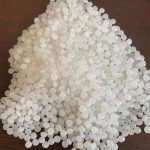
Polyethylene powder is a very important synthetic material, which is a polymer compound synthesized from ethylene monomer and widely used in the manufacture of plastic products, fibers, containers, pipes, wires, cables and other fields. With the continuous introduction of new materials and new technologies, the application of polyethylene powder is also expanding. The future development trends will be as follows: 1. Green and environmental protection trend: With the increasing awareness of environmental protection, the development trend of green and environmentalRead More …
What is the HS code of polyethylene powder coating?

Introduction of HS code of polyethylene powder coating HS CODE is the abbreviation of “Harmonized Commodity Description and Coding System”. The Harmonization System Code (HS-Code) is formulated by the International Customs Council and the English name is The Harmonization System Code (HS-Code). The basic elements of customs and commodity entry and exit management agencies of various countries to confirm commodity categories, conduct commodity classification management, review tariff standards, and inspect commodity quality indicators are the common identity certificates for importRead More …
What is the CN number of polyethylene powder?
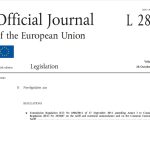
The CN number of polyethylene powder: 3901 Polymers of ethylene, in primary forms: 3901.10 Polyethylene having a specific gravity of less than 0,94: —3901.10.10 Linear polyethylene —3901.10.90 Other 3901.20 Polyethylene having a specific gravity of 0,94 or more: —-3901.20.10 Polyethylene in one of the forms mentioned in note 6(b) to this chapter, of a specific gravity of 0,958 or more at 23 °C, containing: 50 mg/kg or less of aluminium, 2 mg/kg or less of calcium, 2 mg/kg orRead More …
What is Polyethylene Paint

Polyethylene Paint, also known as plastic coatings, are coatings applied to plastic materials. In recent years, plastic coatings have been widely used in mobile phone, TV, computer, automobile, motorcycle accessories and other fields, such as automotive exterior parts and interior parts. Components, plastic coatings are also widely used in sports and leisure equipment, cosmetic packaging, and toys. Thermoplastic acrylate resin coatings, thermosetting acrylate-polyurethane resin modified coatings, chlorinated polyolefin modified coatings, modified polyurethane coatings and other varieties, among which acrylic coatingsRead More …
What is High Density Polyethylene
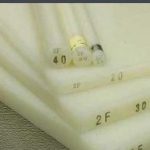
High density polyethylene (HDPE), white powder or granular product. Non-toxic, tasteless, crystallinity of 80% to 90%, softening point of 125 to 135°C, use temperature up to 100°C; hardness, tensile strength and ductility are better than low density polyethylene; wear resistance, electrical Good insulation, toughness and cold resistance; good chemical stability, insoluble in any organic solvent at room temperature, corrosion resistance of acid, alkali and various salts; thin film permeability to water vapor and air, water absorption Low; poor aging resistance,Read More …
What is the Production Process of Polyethylene
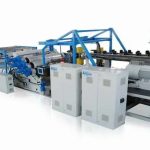
The production process of polyethylene can be divided into: High pressure method, high pressure method is used to produce low density polyethylene. Medium pressure Low pressure method. As far as the low pressure method is concerned, there are slurry method, solution method and gas phase method. The high pressure method is used to produce low density polyethylene. This method was developed early. The polyethylene produced by this method accounts for about 2/3 of the total output of polyethylene, but withRead More …
What Is Modified Polyethylene ?
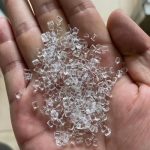
What Is Modified Polyethylene ? The modified varieties of polyethylene mainly include chlorinated polyethylene, chlorosulfonated polyethylene, cross-linked polyethylene and blended modified varieties. Chlorinated Polyethylene: A random chloride obtained by partially replacing hydrogen atoms in polyethylene with chlorine. Chlorination is carried out under the initiation of light or peroxide, and is mainly produced by aqueous suspension method in industry. Due to the difference in molecular weight and distribution, branching degree, chlorination degree after chlorination, chlorine atom distribution and residual crystallinity ofRead More …
Physical And Chemical Properties of Polyethylene Resin

Physical And Chemical Properties of Polyethylene Resin Chemical Properties Polyethylene has good chemical stability and is resistant to dilute nitric acid, dilute sulfuric acid and any concentration of hydrochloric acid, hydrofluoric acid, phosphoric acid, formic acid, acetic acid, ammonia water, amines, hydrogen peroxide, sodium hydroxide, potassium hydroxide, etc. solution. But it is not resistant to strong oxidative corrosion, such as fuming sulfuric acid, concentrated nitric acid, chromic acid and sulfuric acid mixture. At room temperature, the above-mentioned solvents will slowlyRead More …
What Is General Properties of Polyethylene Resin
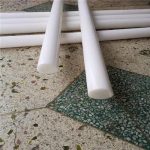
General Properties of Polyethylene Resin Polyethylene resin is a non-toxic, odorless white powder or granule, milky white in appearance, with a wax-like feel, and low water absorption, less than 0.01%. The polyethylene film is transparent and decreases with increasing crystallinity. The polyethylene film has low water permeability but high air permeability, which is not suitable for fresh-keeping packaging but suitable for moisture-proof packaging. It is flammable, with an oxygen index of 17.4, low smoke when burning, a small amount ofRead More …
Classification of Polyethylene
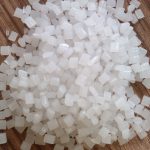
Classification of polyethylene Polyethylene is divided into high density polyethylene (HDPE), low density polyethylene (LDPE) and linear low density polyethylene (LLDPE) according to the polymerization method, molecular weight and chain structure. LDPE Properties: tasteless, odorless, non-toxic, dull surface, milky white waxy particles, density about 0.920 g/cm3, melting point 130℃~145℃. Insoluble in water, slightly soluble in hydrocarbons, etc. It can withstand the erosion of most acids and alkalis, has low water absorption, can still maintain flexibility at low temperatures, and hasRead More …
Brief Introduction of Polyethylene Resin
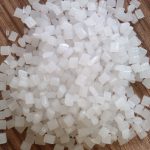
Brief Introduction of Polyethylene Resin Polyethylene (PE) is a thermoplastic resin obtained by polymerizing ethylene. In industry, copolymers of ethylene with small amounts of alpha-olefins are also included. Polyethylene resin is odorless, non-toxic, feels like wax, has excellent low temperature resistance (minimum operating temperature can reach -100~-70°C), good chemical stability, and can resist most acid and alkali erosion (not resistant to oxidation nature acid). It is insoluble in common solvents at room temperature, with low water absorption and excellent electricalRead More …
